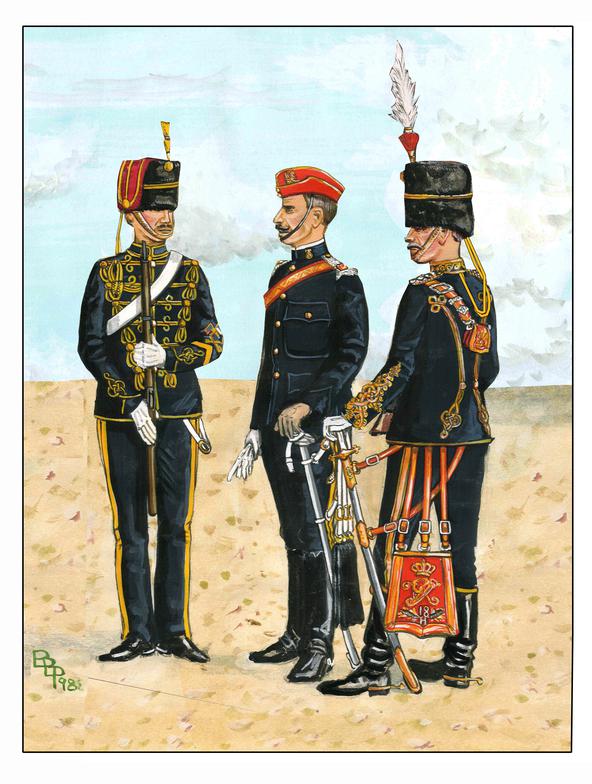Queen Victoria's Armed Forces
1881-1902
From the forthcoming book
HUSSAR REGIMENTS
UNIFORMS, ARMS & EQUIPMENT
HUSSAR REGIMENTS
1881-1902
For a general synopsis on the general development of cavalry and uniforms in the late nineteenth century, please read the introduction to Dragoon Guards and Dragoons
In 1881, hussar regiments represented the largest segment of the British cavalry arm with thirteen regiments, all described as light cavalry. Although the designations of heavy, medium and light cavalry remained in place, these distinctions were increasingly becoming blurred and by the end of the century the role of mounted troops as scouts, advance troops and mobile infantry irrespective of designation was becoming the norm.
Hussars had appeared in the British army around 1806 and there were four regiments at the end of the Napoleonic Wars. These were the 7th, 10th, 15th and 18th (the latter disbanded in 1821). They were still not titled “Hussars” and retained the designation of Light Dragoons. A fourth regiment (the 8th) was converted from light dragoons in 1822 and another (The 11th) in1840. A new regiment, the 18th, was raised in 1858 and in 1861 it was decided that the four remaining Light Dragoon regiments (the 3rd, 4th, 13th and 14th) would be converted to hussars. Finally, in 1862 the three Bengal Light Cavalry regiments raised for the Indian Mutiny in 1857 would join the British establishment as the 19th, 20th and 21st Hussars.
In 1856 the British hussar regiments adopted a tunic similar to the “Attilla” introduced in the 1850s by Austria, Prussia and many other German states. This was a dark blue single breasted garment edged all round with yellow cord (gold for officers) including the collar. Across the chest there were six loops of cord with drop loops on the end and fastened by toggles. Light Dragoons had taken a similar tunic in wear, but with five loops instead of six which disappeared (except in some yeomanry regiments) when the conversion to hussars took place. Leather reinforced (booted) blue overalls were worn (except for the 11th Hussars who had crimson) with double stripes on the sides. In 1858 a new busby replaced the old pre Crimean one which had a laced bag and twisted cord boss on the front. In 1874 the skirts of the tunic were shortened and the overalls were replaced by breeches and knee boots. This was, in general, the uniform worn by all the hussar regiments in 1881.



